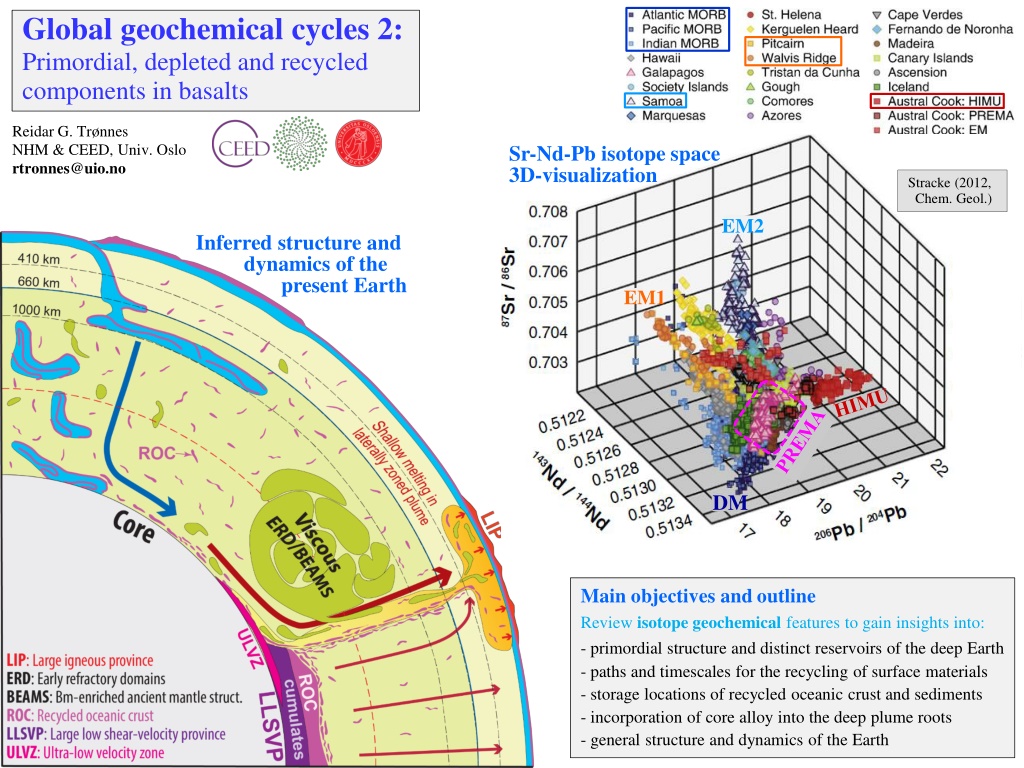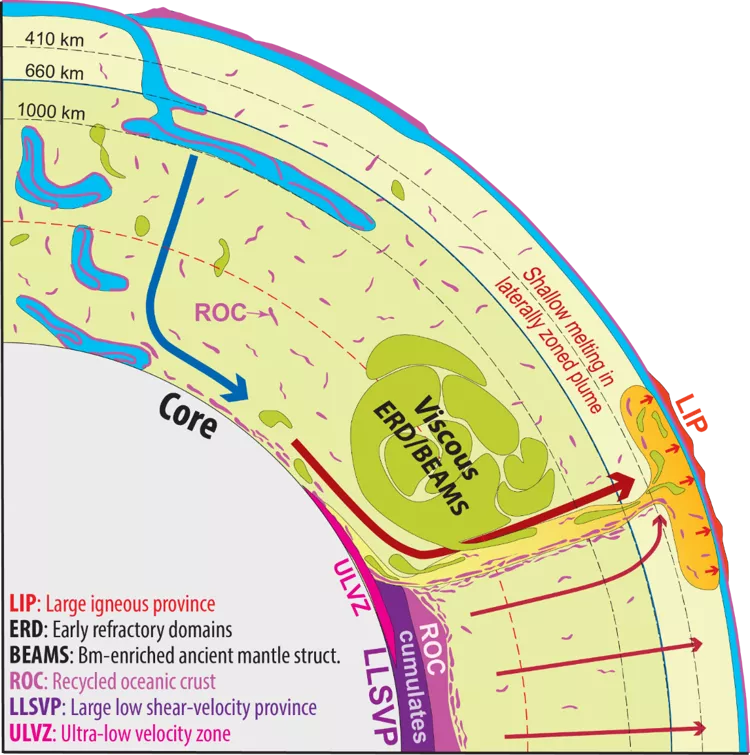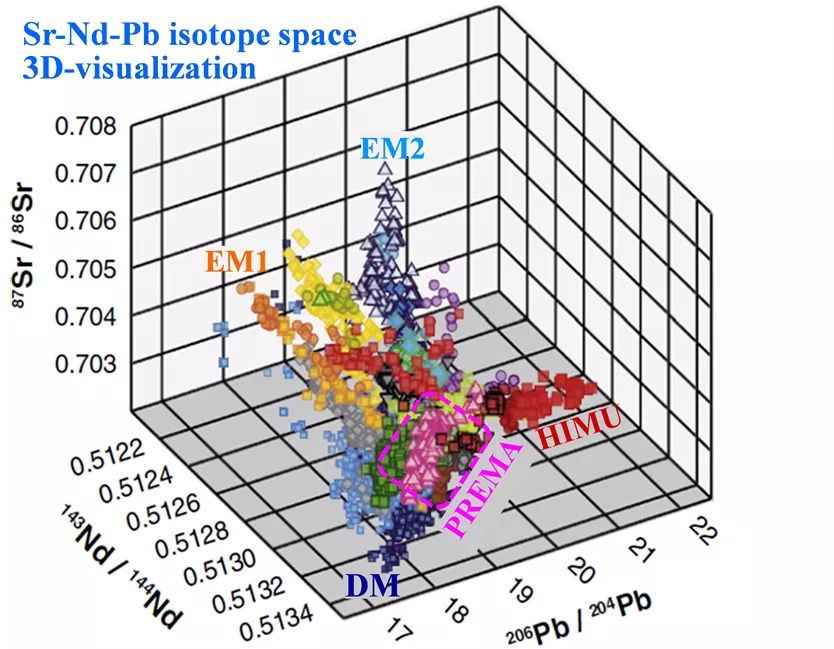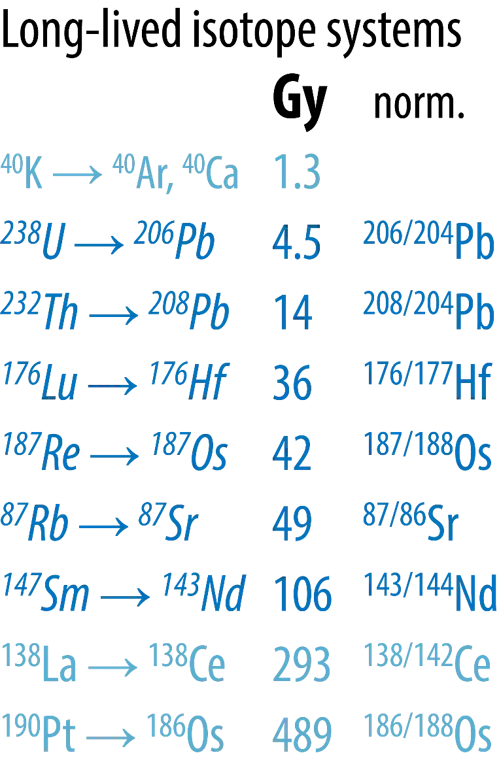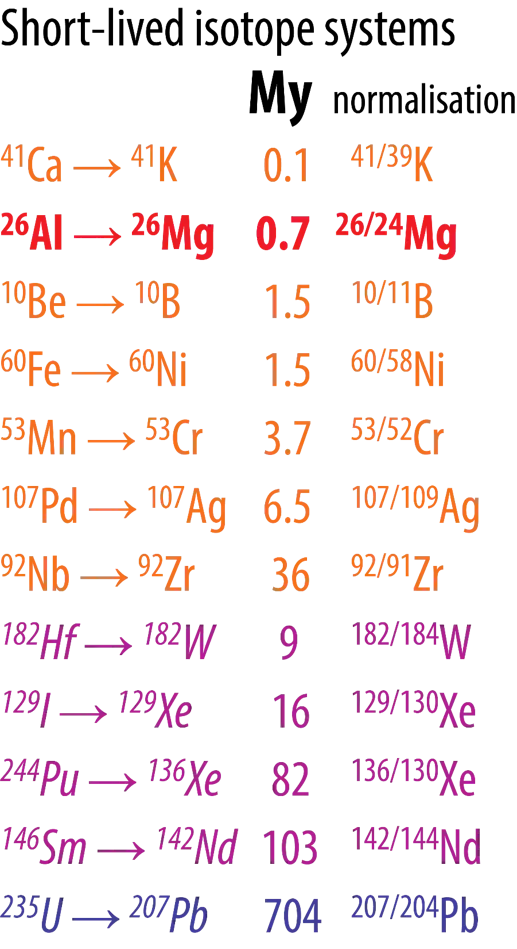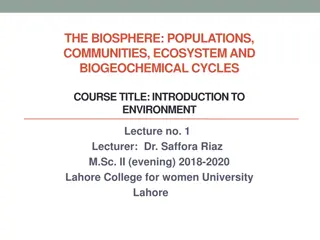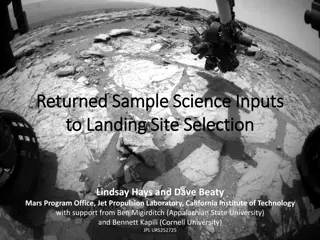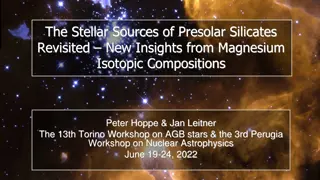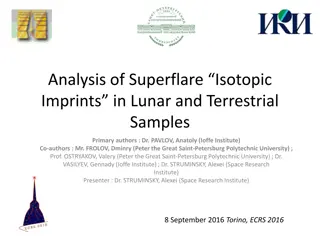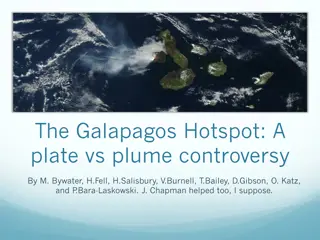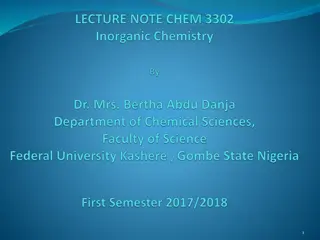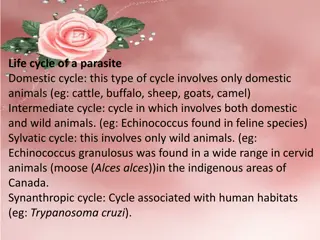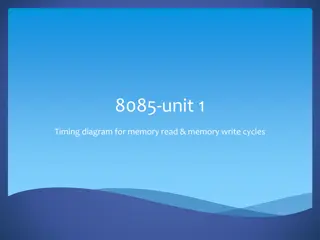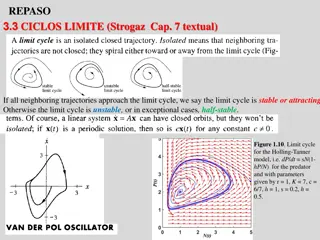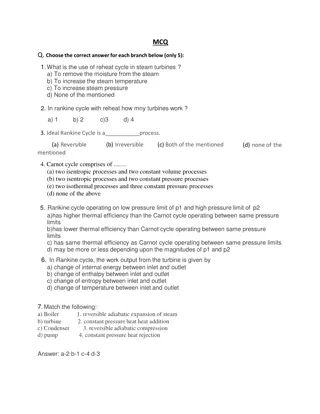Insights into Earth's Geochemical Cycles and Isotopic Evolution
Explore the primordial, depleted, and recycled components in basalts to understand deep Earth reservoirs, recycling paths, and core-mantle dynamics using isotope geochemistry. Learn about radioactive decay systems, mantle array evolution, and U-Th-Pb systematics in planetary differentiation.
Download Presentation

Please find below an Image/Link to download the presentation.
The content on the website is provided AS IS for your information and personal use only. It may not be sold, licensed, or shared on other websites without obtaining consent from the author. Download presentation by click this link. If you encounter any issues during the download, it is possible that the publisher has removed the file from their server.
E N D
Presentation Transcript
Global geochemical cycles 2: Primordial, depleted and recycled components in basalts Reidar G. Tr nnes NHM & CEED, Univ. Oslo rtronnes@uio.no Sr-Nd-Pb isotope space 3D-visualization Stracke (2012, Chem. Geol.) EM2 Inferred structure and dynamics of the present Earth EM1 DM Main objectives and outline Review isotope geochemical features to gain insights into: - primordial structure and distinct reservoirs of the deep Earth - paths and timescales for the recycling of surface materials - storage locations of recycled oceanic crust and sediments - incorporation of core alloy into the deep plume roots - general structure and dynamics of the Earth
Geochronology: Radioactive decay systems with half-lives in My and Gy Important heat source for the first 2-3 Ma interm. th long th Common constraints on early planetary differentiation and core-mantle geo- chemical reservoirs Very long th
The longlived Sr-143Nd isotopic mantle array Time-integrated isotopic evolution 87Rb 87Sr 147Sm 143Nd
Nd and Sr isotopes of oceanic basalts: the "mantle array"
eNd= [ ]*104 (143Nd/144Nd)sample- (143Nd/144Nd)standard (143Nd/144Nd)standard Hf-Nd isotopic array 147Sm 143Nd, 143Nd/144Nd eNd = [(143/144Ndsample/143/144Ndstand) - 1]* 104 176Lu 176Hf, 176Hf/177Hf eHf = [(176/177Hfsample/176/177Hfstand) - 1]* 104 72 Hf The parents (Sm, Lu) are less incompatible (or more compatible) in residue than the daughters (Nd, Hf) positive ~correlation between eNdand e eHf DM: Depleted mantle PM: Primitive mantle EM: "Enriched" mantle eHf PM eNd
235U 207Pb 238U 206Pb Th: 4.5 Ga 232Th 208Pb Th: 14.0 Ga Th: 0.7 Ga U-Th-Pb systematics the Geochron Single-stage Pb-evolution moving to the geochron Two-stage Pb-evolution moving beyond the geochron Canyon Diablo Canyon Diablo
The Pb-paradox Hofmann (2003, Treat. Geochem.)
Explanations: - Late (1-3 Ga) loss of Pb to the core ( geochemical core pumping ) - unimportant - Most important: U-recycling under oxidising surface conditions Riverine transport from UCC to ocean lithosphere deep mantle by sinking slab LCC (and possibly melt depleted mantle) holds complementary unradiogenic Pb and low U/Pb Uranyl, U6+, is water-soluble (lakes, rivers, ocean) high-m Intra-crustal melting low-m Subduction of high-m m lithosphere mantle re-fertilization
Lower crust has indeed low206/204Pb (unradiogenic) White (2006, Geochemistry)
Additional hidden reservoir component for time-integrated low m: Sulphide inclusions in depleted mantle peridotite Strong melt depletion is recorded by low Re/Os-ratios and low 187Os/188Os (187Re 187Os, Th: 42 Ga) Re: incompatible (partitions to melt) Os: strongly compatible in residual/refractory olivine, sulphides and Os-Ir-alloys Most of the included sulphides have Pb-isotope compositions more unradiogenic than the geochron CC Burton et al. (2012, Nature Geosci.)
Sobolev et al. (2005, Nature; 2007, Science): Section of rising lithosphere Small black dots: decompression melt Minor elements in olivine phenocrysts - reflect melt composition Erupted magmas are mixtures of: - residual olivine may be eliminated from metasomatized garnet-pyroxenite melting source melts from peridotite and melts from ga-pyroxenite poor retention of Ni and Cr in the source high Ni-conc. in melt and olivine phenocrysts First-stage Si-rich melts migrate upwards and react with peridotite to form metasomatic garnet-pyroxenite Mg2SiO4+ SiO2= 2 MgSiO3 Eclogite melts Eclogite lenses Peridotite
Olivine phenocryst, Ni and Cr: - held back by residual olivine - low in MORB, high in Hawaii Opposite end members: Surtsey: some hybridized pyroxenite in source Jan Mayen: peridotite-dominated source Sobolev et al. (2007)-data
Ca and Mn: - held back by residual cpx - low in Hawaii, high in MORB - Surtsey: Hawaii-like, pyroxenite in source - Jan Mayen: peridotite-dominated source Sobolev et al. (2007)-data
27 deep-rooted plumes (French & Romanowicz, 2015, Nature) Iceland Azores Canary Hoggar Hawaii Cape Verde Canary Afar Caroline Marshall-Micronesia Cameroon Galapagos Ascension Comoros Samoa Marquesas St Helena Tahiti-Soc Reunion Pitcairn San Felix Easter Macdonald Seamount Juan Fernandez Tristan Gough Crozet Kerguelen Loisville Herd Bouvet
OIBs: Correlated model ages and Th/U ratios Andersen et al. (2015, Nature) Plume source model ages: 1.7 - 2.5 Ga Great oxidation event: 2.4 Ga Also: Cabral et al. (2013, Nature) Olivine-hosted sulphide inclusions in lavas from Cook Islands, Polynesia have S-isotopes indicating Archean ROC Oxidation of the atmosphere and oceans recycling of U into the deep mantle decreasing Th/U ratio of plume sources with time
Hofmann (2003, Treat. Geochem.) Pb-isotope array, MORB Sr-Nd-isotope array, MORB Pacific MORBs: restricted range Indian MORBs: extend to very enriched compositions Extension to the crustal array Northern Hemisphere Reference Line, NHRL D D-notation: vertical distance above (positive) and below (negative) the NHRL: D D207Pb and D D208Pb
Sr-Nd-Pb-array, OIB and MORB (mantle array) Hofmann (2003, Treat. Geochem.)
Identifying mantle components, OIBs Stracke (2012, Chem. Geol.) DM HIMU EM1 DM EM2 Samoa EM1 EM2 HIMU EM1 DM
Conclusions, inferences-1 Origin of the EM1, EM2, HIMU and PREMA components Hofmann (1997, Nature) EM2 EM1 DM Compositional characteristics Spider diagrams, right side ROC = MORB - arc-component Five main candidate materials Recycled oceanic crust, ROC Tatsumi (2005, GSA Today) CC: largely derived from arc magmatism Upper continental crust, UCC = terrigenous, clastic sediments Lower continental crust, LCC - ROC - LCC or: pelagic sed.?? or: residual arc mantle wedge?? - UCC (= terrigenous sed. ??) - MORB-asthenosphere HIMU EM1 Subcontinental lithospheric mantle, SCLM Pelagic sediments, contributions from: - dissolved UCC from rivers + - hydrothermal exhalations at the MORs EM2 DM Consider: - parent/daughter ratios: Sm/Nd, Rb/Sr, U/Pb, Th/Pb - time for radiogenic ingrowth PREMA - component mix, the matrix is probably refractory lower mantle with primordial-like He and Ne - BEAMS?
Jackson & Macdonald (2022, AGU Adv.): Hemispheric geochemical dichotomy of the mantle is a legacy of austral supercontinent assembly and onset of deep continental crust subduction EM1: LCC, pelagic sediment, or residual base of mantle wedge EM2: UCC, terrigenous sediment, i.e. UCC Sr-Nd-Pb isotope space 3D-visualization EM2 EM1 DM
D DSr Dupal Dupal anomaly (Hart, 1984, Nature): low Nd-, high Sr- and Pb-isotope ratios D D8/4 Hart (1984, Nature) also defined the Northern Hemisphere Reference Line, NHRL, for Pb-isotope compositions Dupal D D7/4 Dupal
Jackson & Macdonald, (2022, AGU Adv.) Dupal characteristicsEM2-UCC (e.g. Samoa) and EM1-LCC (esp. Pitcairn and Tristan) EM2- UCC EM1- UCC Southern hemisphere Northern hemisphere Tristan/Gough TR, Discovery DI, Samoa SA, Pitcairn PI, Meteor/Shona MS, Tasmantid TA, Heard/Kerguelen HK, Hawaii HW, San Felix SF, Societies SO, Amsterdam/St.Paul AM
Hawaii plume root Jackson & Macdonald, (2022, AGU Adv.) Southern hemisphere: Gondwana assembly with deep continental subduction and ultra-high-p metamorphism
Jackson & Macdonald, (2022, AGU Adv.)
Jackson & Macdonald, (2022, AGU Adv.) Main "window of opportunity": 650-450 Ma - ultra-high-p metamorphism of cont. protoliths confined to the southern hemisphere, only - likely period of deep continental subduction giving rise to the Dupal anomaly
Jackson & Macdonald, (2022, AGU Adv.)
Deep-mantle CC mineralogy and density-depth relation Ishii et al. (2012, EPSL) Liu (2006, EPSL) Mineral abbreviations Cf: Ca-ferrite-structuredAl-rich phase NaAlSiO4-MgAl2O4 Cpv: Ca-perovskite, CaSiO3 Hol: Hollandite, (K,Na)AlSi3O8 St: Stishovite Gt: Garnet CAS: Ca-silicate: CaAl4Si2O11 Cpx: Clinopyroxene New name davemaoite liebermannite donwilhelmsite
Mineral proportions, 20-28 GPa, 1400-1800 C Ishii et al. (2012, EPSL) Mineral proportions % 24 24 24 22 22 26 26 26 22 20 p (GPa) p (GPa) p (GPa) Density contrasts to PREM
Schematic model for deep subduction of continental crust Inspired by evolutionary sections through the Norwegian Caledonides in Fossen et al. (2009, Making of a Land - Geology of Norway. Geol. Soc. Norway)
